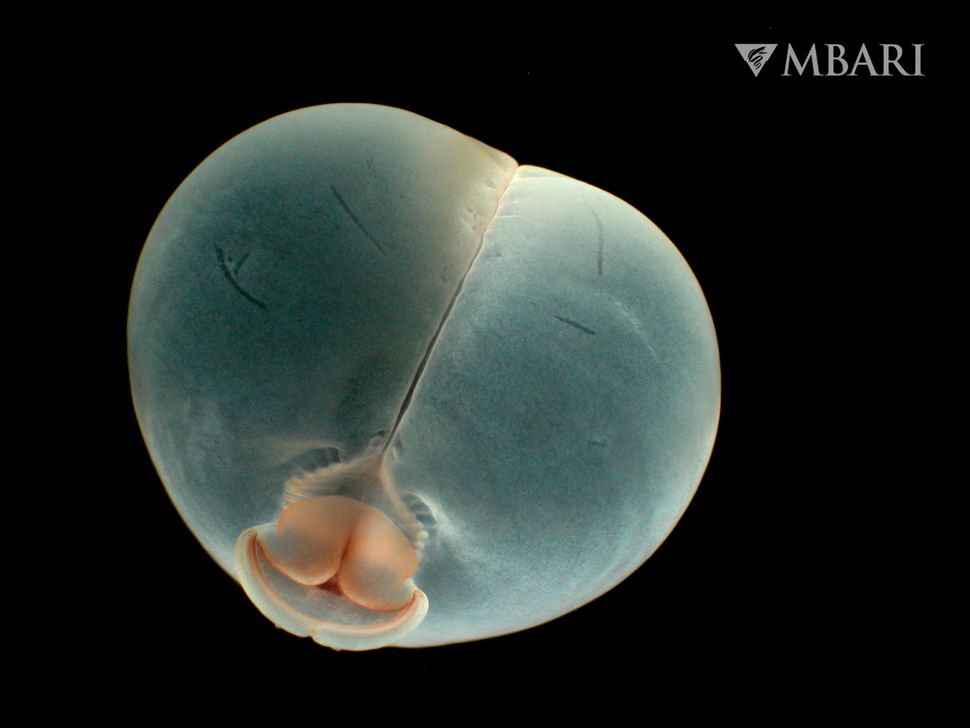Dubbed the Pigbutt worm (Chaetopterus pugaporcinus), this peculiar creature inhabits the waters of Central California, primarily around Monterey Bay, and the Channel Islands. Feeding on marine snow, organic material drifting through the ocean, this hazelnut-sized worm captivates with its bizarre appearance.
Discovered by scientists from the Monterey Bay Aquarium Research Institute (MBARI) in 2001, the Pigbutt worm left experts perplexed with its unusual features. “I was instantly interested in this strange creature that looked like the rump of a pig from one side and Mick Jagger’s lips from the other,” remarked Karen Osborn, a research zoologist at the Smithsonian’s National Museum of Natural History and an adjunct scientist at MBARI.
Initially labeled as a “mystery blob,” the species was formally described in 2007 based on eight specimens collected from the mesopelagic zone, residing between 650 and 3,300 feet (200 to 1,000 meters) beneath the surface, in California’s Monterey Bay. Despite its puzzling appearance, genetic analysis confirmed its classification within the chaetopterid family, resembling an oversized larva of a bristle worm.

“Chaetopterids are parchment worms, so called because they make papery tubes attached to the seafloor,” explained Osborn. However, unlike its tubelike relatives, which are only free-swimming during the larval stage, the Pigbutt worm navigates the ocean, utilizing its inflated midsection for buoyancy.
While researchers believe the collected Pigbutt worms were adults, uncertainty remains as the specimens display traits typical of larvae. Lacking discernible sex organs, indicating a juvenile stage, they were notably larger—five to 10 times the size of any known chaetopterid larvae. Intriguingly, when placed in a tank with the option to settle on the seabed, they remained adrift, suggesting a departure from the sediment-based lifestyle observed in other chaetopterids.
This behavior prompted researchers to speculate that Pigbutt worms are undergoing an “evolutionary leap,” forsaking the seafloor for a nomadic existence in the water column.
Transporting live samples back to the research vessel enabled scientists to learn more about this bizarre little creature. For example, its body creates blue light and produces a green, bioluminescent mucus, perhaps to deter predators.
Pigbutt worms eat marine snow — tiny particles of dead animals, feces and other organic matter. As the “snow” falls toward the seabed, the worm “casts out a web of snot” to catch it, according to MBARI’s website.
Pigbutt worms were named by the remotely operated vehicle pilots who found the strange blobs. During long hours exploring the deep sea, “the conversation can get a little colorful, especially when faced with the search for something that looks like the back end of a pig,” Osborn said.
